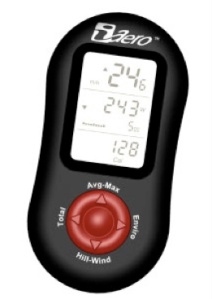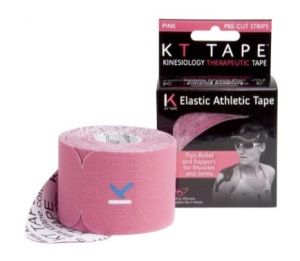I may not have had the best racing year in 2009, but it’s been a great learning experience nonetheless. I worked hard training through periodization, and in spite of a rocky start managed to make some gains in my speed and power. In order to do this, I did what I always do to advance my knowledge base: I read. I’ve discovered some great books this year which helped me tremendously as an athlete, and I think will make me a better coach. I’ve admired and used Coach Joe Friel’s methods for quite a few years, but I’ve added to this, a mix of well written easy to follow books which I’m reviewing today, for your enjoyment.Here now, are my impressions of the iBike, the books I used, and a few bike related products that helped turn me into a Power – full person.

This is the first year I used power as my gauge rather than heart rate training, and I agree with many other coaches, it makes a great difference. This meant that I had to buy a power meter for the first time, something that I didn’t think I was going to able to afford, but I’m here to tell you that is I indeed possible to do power training on a budget. I also read accompanying books which helped me to understand how to use the power meter in the most efficient way. I chose is an iBike Aero for my power meter, because it was the lightest and most affordable way to enter into the world of Power, that is, using watts/kg as my gauge. Unlike many other power meters, this cool little unit uses air flow through the head of the unit, combined with cadence and wheel speed to measure power. And since I’d been using a Garmin 305 for the past few years, I didn’t even have to change sensors, since the iBike can read data from the Garmin sensors (bravo, iBike; way to compliment, rather than compete with those wonderful Garmin GPS units).
I chose the iBike unit because I didn’t want to pay “double the price” for “triple the weight” units such as the CycleOps PowerTap. Though PowerTap is the professional’s “meter du jour” (and for good reason), I simply could not afford it, nor did I want to have to use a special hub (which is FAR heavier than mine), just for data. And, since the sensors for the Garmin were already on my bike, seemed the logical and frugal way to go. I chose the top of the line AERO, because it provides wind data relative to the ground or rider, and that’s important if you live in a windy area. This unit cost $800, but iBike make several units that cost a fraction of this, starting with a $200 unit. But even at $800 for the top of the line Aero, it’s still half to a third of the price of most other power meters.
Set up for the iBike was easy, and with the help of their youtube video, I was on my way to power analysis, in a few minutes. The first month of gathering data was interesting, and it truly showed me that my method for “base training” was flawed without power analysis. I was going out too hard, working on too many hills too soon, and burning out a bit, even before my season got started. On days where I thought “it’s just me, I’m just tired” and would normally have just pushed harder (NOT the thing to do in Base), but still kept within the same “heart-rate zone”. But I was able to see clearly with the iBike Aero that it was the wind pushing me hard, and that I needed to ease up in order to get the true Base workout that I needed. Because of this, I had my best base training year, EVER. The “proof of the pudding” was that my speed improved, this year, and as someone who’s been a bike hack for a while (20+ years), that’s tremendous. If I had to pick out the one piece of equipment that made the biggest difference in my training this year, it would be the iBike Aero.
N.B. the iBike Power Meter is just that, a power meter, NOT a GPS unit. If you want a great GPS unit, consider the Garmin 705, the next generation up from my 305. The 705 can even sense the iBike data, and combine it with the GPS data to give you a full picture of your workouts. This is particularly useful if you using Training Peaks your data analysis, an EXCELLENT athletic data analysis website. I DO NOT recommend the Garmin Connect website. Garmin used to have a great association with MotionBased.com which gave you the full spectrum of data, but this year they decided to go it on their own, and dropped important data analysis tools which left their customers well, a bit high and dry (I can’t even retrieve my old data in full). If they ever improve their website, I’ll be the first in line to use it, but until then, I choose to pay a pretty penny for Training Peaks, rather than get half data.
Books

Training and Racing with a Power Meter
by Hunter Allen and Andrew Coggan
Let’s make this simple: I could not have improved my speed this year using a power meter, if I had not read this book. Allen and Coggan have written a nearly flawless book that has everything you need to get started and train with a power meter. Their methods are clear, and the language is easy enough for most people to understand. The chapter “Using Power to Change your Workouts”, changed the way I think as both a coach and rider. If you have a Power meter of any kind, you owe it to yourself to get this book (or at least make your coach read it 😉 ).
Base Building for Cyclists
by Thomas Chapple
As someone who hates “base training” but understands the need for it, I really appreciated this book. I must admit that sometimes I felt the book title should have been “Nothin’ but Base”, because Chapple labels what I would have called the “build” period as “late base” but I suppose that’s my own “base” prejudice. There were times when I thought, “oh c’mon ANOTHER week of base?” but still held true to his principles, and became a faster rider for it. Truly this was an invaluable book for me this year, and generally, a good read for any racer, or rider who has a goal of doing longer, faster rides. It won’t teach you how to ride, but it will teach you how to train smarter, and that’s exactly what it’s suppose to do.
Nutrient Timing
by John Ivy Ph.D and Robert Portman Ph.D
I WISH I had known about this book in the beginning of the season! This year I made an unsuccessful attempt to gain some muscle mass: I thought that if just gained some weight, it didn’t matter if it was fat weight or muscle weight, because eventually it would all turn to muscle since I workout /ride so much. OMG, wrong wrong wrong!!!! Although I paid attention to my nutritional needs, just like a comedian TIMING is EVERYTHING. This book is now my go-to book for when to eat, what to eat, and how to think about nutrition. I suspect that, with this book in my quiver, next year I will be a force to be reckoned with, even if there’s less of me (again).
And, if you really want to geek out, and get all the force and momentum cycling equations (without working through pages of equation on your own), then Bicycling Science by David Gordon Wilson is the book for you. I warn you, it’s a dry read, but if you’re truly a a science nerd, you’ll be used to it.
Bike Related Products

KT Kinesiology Tape (aka ‘lil’ pink spiders for you and me).
I am THRILLED to have discovered KT Tape this year. Ever since my snowboarding accident in 2003, I have been plagued by a number of injuries that still haunt me today. Enter KT Tape. Just before I went out on the RAAM as crew, my shoulder began hurting again. I’d been turned onto KT TAPE by one of my Twitter friends, Hilary from Outside Media (aka @outsidehilary on twitter) and thought I’d give it a try, but really didn’t expect it to make much difference. After all, it’s “just tape”, right? WRONG. KT Tape held my shoulder down and back, and allowed the flare up to heal, even though I was hauling heavy items, then sitting still in the van for many days (normally that’s a brutal combination for this injury). When mounted properly, the tape lasted 4-5 days, and performed better and longer than the tape I was given in Physical Therapy, back in 2003. Janet Christiansen, solo rider for the RAAM (who I was crewing for), also tried some on her knee and was also quite impressed. When I got home, I used KT TAPE on my knee and calf, and found that the weakness in that knee was, well, just gone. KT TAPE is one of those products that, while I hope I never need it, do not ever want to be without it again; it will always be in my medicine cabinet, just in case.
Compression garments, for long distance riding
My first experience with compression garments came when I decided to try Etxe Ondo’s Sbaren bibs. As much as I have loved this brand, I balked at trying anything compression because I could never get passed that first impression “that can’t be comfortable”. But then I realized that if I was going to try an ultra-distance race, then it was high time I took the advice of Ultra veterans and try compression. Well, it works; it reduces vibration in the muscles, it’s comfortable, and most importantly makes a BIG difference in recovery the next day. I tried a few weeks of compression, and now I love it! Janet also tried compression this year, in the form of socks, and it helped her quite a bit in helping to prevent edema in her calves.

Action Wipes
Saddle sores suxOr, and they can stop a good training regimen cold, and take you off your bike for days, and sometimes, weeks. But saddles sores are preventable if you know the key element that causes them: bacteria. And what can save you from bacteria? Action Wipes!!! When you can’t get to a shower immediately after a ride, use an Action Wipe for a thorough aromatic cleaning, and it will be happy trails all the way. Plus Action Wipes are washable and reusable, which is awesome for the environment.